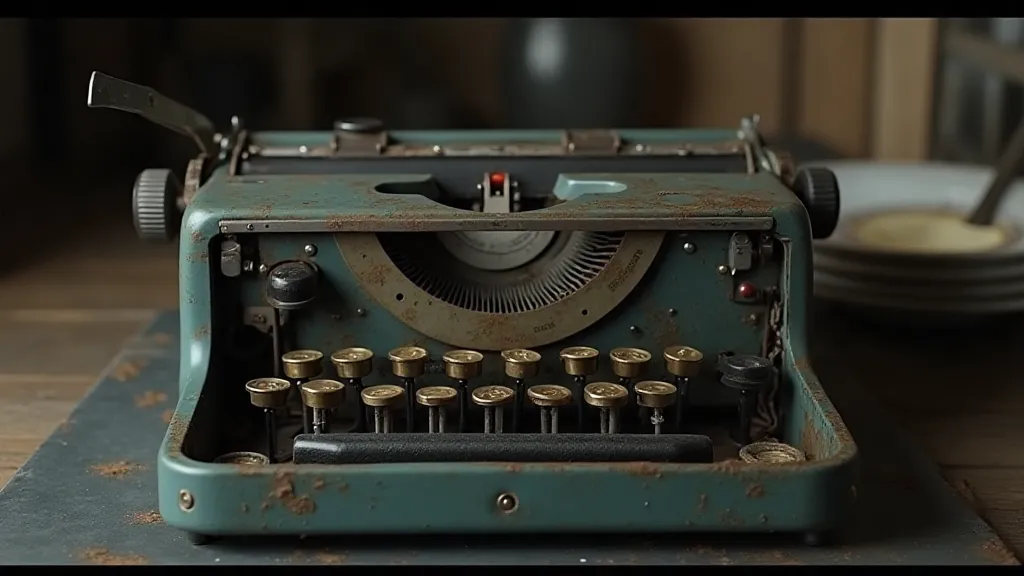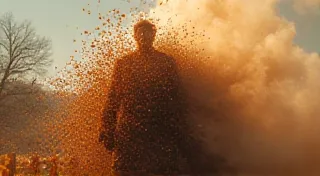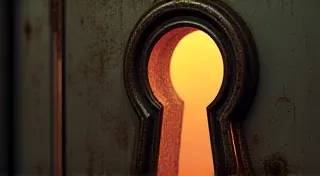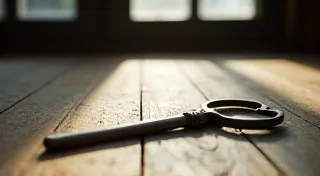Veils of Memory: The Emotional Resonance of Antique Typewriter Ribbons
There’s a quiet poetry to the objects that linger. Not the grand, celebrated relics of nations, but the smaller, more intimate pieces of our lives – the tools we’ve used, the instruments that have echoed our joys and sorrows. Among these, the humble typewriter ribbon holds a particularly poignant charm, a fragile thread connecting us to a bygone era of focused creativity and deliberate expression. More than just office supplies, these vintage ribbons are veils of memory, whispering tales of writers long gone, capturing the essence of moments lived and words crafted.
Consider the physicality of it – a long, slender strip of fabric, often a deep black or a faded burgundy, coiled neatly around a spindle. It’s a seemingly unremarkable object, yet it carries the weight of countless keystrokes, the imprint of countless thoughts meticulously rendered on paper. Unlike the instantaneous flow of digital text, the typewriter demanded a deliberate engagement, a careful consideration of each word. The ribbon itself was an active participant in this process; a silent partner in the creative act. A clean, crisp ribbon meant a dark, bold impression; a worn ribbon signaled the end of its usefulness, but also, a life fully lived within the machine.
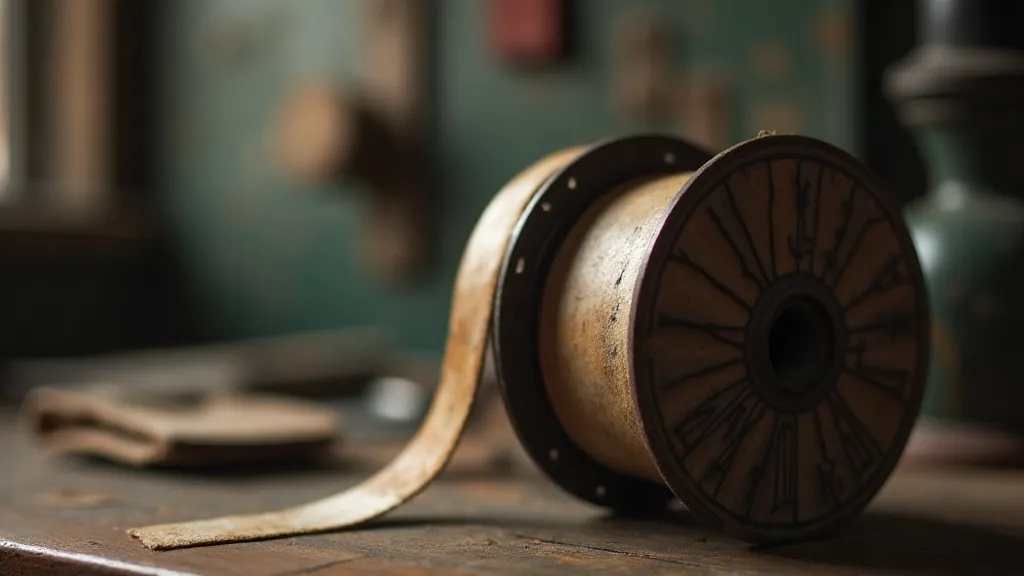
A History Whispered in Ink
The story of typewriter ribbons is inextricably linked to the evolution of typewriting itself. Early ribbons, in the late 19th and early 20th centuries, were often woven from silk, prized for their longevity and the clarity of their impressions. These early ribbons were meticulously crafted, often hand-woven, a stark contrast to the mass-produced, nylon-based ribbons that became commonplace later on. The nuances captured by these early ribbons speak volumes about the artistry involved, and their condition often provides compelling fragments of a tapestry revealing details of the era in which they were created. The shift to nylon brought affordability and ease of production, but it also marked a subtle shift in the very character of typewriting. The feel of silk beneath the platen, the distinct “snap” of the keys hitting the ribbon – these were nuances lost with the move towards synthetic materials.
Imagine a journalist in the roaring twenties, diligently hammering out headlines on a Remington, the black ink of the ribbon a stark contrast to the newsprint. Picture a novelist in the 20th century, painstakingly crafting a manuscript, the rhythmic clatter of the keys filling a quiet study. Each keystroke, imprinted on the ribbon, became a tangible record of that creative effort, a testament to the power of words.
The standardization of ribbon widths and colors also played a role. While initially a wide range of hues were available, practicality and cost led to the dominance of black and eventually, a slightly softer black-red, known as “Oriental Black.” This simplification, while efficient, diminished the expressive potential of the medium – another subtle loss to the evolving landscape of typewriting. The emotional impact of color, and the stories embedded within its absence or alteration, resonate profoundly, contributing to the imprints of the soul these ribbons hold.
The Sentimental Value: More Than Just a Ribbon
For many collectors and enthusiasts, antique typewriter ribbons represent more than just pieces of office equipment. They are physical manifestations of a time when craftsmanship and deliberate action were valued. They evoke a sense of connection to the past, a yearning for a slower, more considered pace of life. The subtle shifts in material and color also contribute to a profound sense of loss and a yearning for the creative freedom of a different age.
I remember finding a box of old ribbons at an estate sale a few years ago. They were tucked away in a dusty trunk, along with stacks of yellowed letters and faded photographs. Holding one of those ribbons – a dark brown, slightly brittle – I felt an immediate and inexplicable connection. It wasn’t just an object; it was a portal to another time, another life. I could almost hear the faint clatter of keys, feel the ghost of a writer’s hand guiding the carriage return.
The fragility of these ribbons adds to their appeal. They’ve been handled, exposed to light and air, and have aged with grace. A tiny fray, a slight discoloration – these aren’t flaws; they are marks of authenticity, testament to a life well-lived. They are tangible reminders of the passage of time and the enduring power of human creativity. The delicate artistry of the fading hues also speaks to a certain quiet beauty found only in the passage of time - a visual poem, a chromatic reverie of disappearing color.
The act of restoration, too, holds a special resonance. Carefully cleaning and preserving these ribbons isn't just about prolonging their physical lifespan; it’s about honoring their history, acknowledging their significance. It’s a way of keeping the stories they hold alive for future generations. The dedicated craftspeople who work tirelessly to preserve these objects are, in essence, maintaining links to a past that is increasingly distant.
Beyond the Machine: A Collector’s Perspective
Collecting vintage typewriter ribbons isn't just about acquiring objects; it's about building a tangible connection to the past. Collectors often specialize in ribbons from specific manufacturers, typewriter models, or even eras. The rarity of certain ribbons can drive up their value, but for most enthusiasts, the intrinsic worth lies in their historical significance and emotional resonance. Many collectors face the frustrating task of identifying lost voices and incomplete narratives, requiring a remarkable understanding of the rusting chronicle of these mechanical marvels.
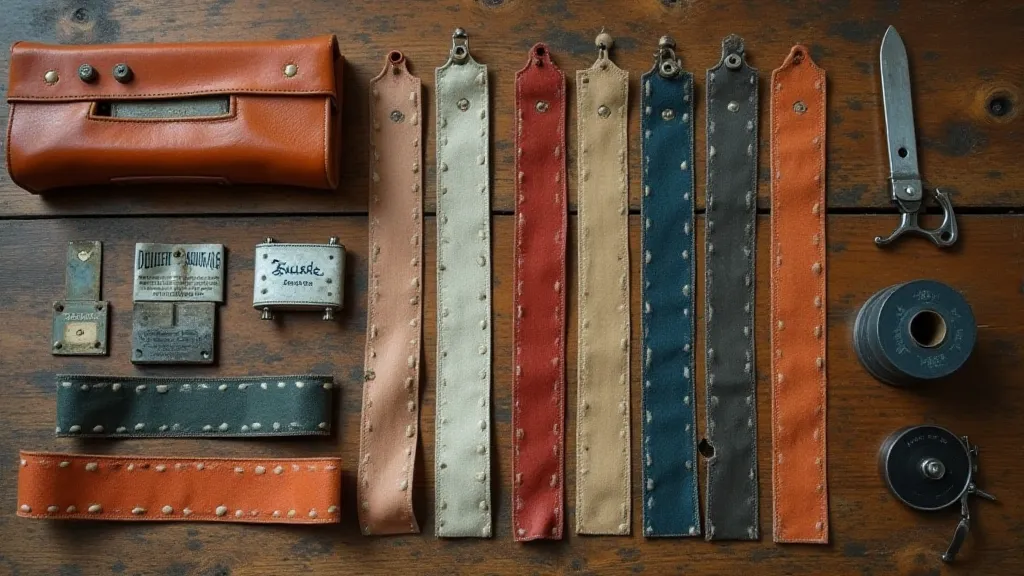
A complete set of ribbons from a particular typewriter model is highly prized, offering a snapshot of the color palettes and manufacturing processes of a specific time. Identifying the manufacturer and the original typewriter the ribbon was intended for is a satisfying challenge for many collectors. The subtle variations in ribbon construction – the weave, the texture, the color density – all contribute to the collector's understanding of the ribbon’s story. Beyond mere identification, the process involves piecing together fragmented histories and uncovering forgotten techniques.
And, of course, the ongoing search for lost and forgotten ribbons is a driving force for many enthusiasts. Estate sales, antique shops, and online auctions often yield unexpected treasures, offering glimpses into the past and adding to the collective understanding of typewriter ribbon history. These discoveries are often accompanied by a poignant sense of rediscovery and a renewed appreciation for the ingenuity of the past.
The Mechanics of Memory: A Deeper Dive
The physical composition of typewriter ribbons—the interaction of fabric, ink, and platen—is a fascinating study in engineering and artistry. Early silk ribbons, with their unique texture and resilience, demanded a specific typewriter design, whereas the mass-produced nylon ribbons necessitated alterations in machine construction. The evolution of the platen material, designed to maximize ink transfer and ribbon longevity, demonstrates an ongoing dialogue between machine and medium. The transition from hand-woven silk to mass-produced nylon wasn't just a matter of cost and efficiency; it marked a shift in the entire ecosystem of typewriting, impacting not only the ribbon itself, but also the typewriter’s mechanics and the writer’s experience.
The Digital Echo: Why Vintage Ribbons Still Matter
In a world saturated with digital fonts and ephemeral data, the enduring appeal of antique typewriter ribbons lies in their tangibility and their connection to a slower, more deliberate pace of life. The imperfections—the slight fading, the occasional smudge—are not flaws, but rather markers of authenticity, proof of a life lived and stories told. The very act of handling a vintage ribbon evokes a sense of nostalgia and a longing for a time when creativity was born not from algorithms, but from human intention. Their continued existence serves as a poignant reminder that even in the age of instant communication, there remains a profound value in the physicality of words and the artistry of their creation.
Preserving the Echoes
While the digital age has largely eclipsed the typewriter, the legacy of these machines – and the humble ribbons that brought them to life – endures. These veils of memory continue to whisper tales of creativity, craftsmanship, and a time when the act of writing was a deliberate and considered act. By appreciating their historical significance and preserving their fragile existence, we can ensure that these echoes of the past continue to resonate for generations to come.
Perhaps, in a future where everything is ephemeral and digital, the enduring charm of a vintage typewriter ribbon will hold an even greater appeal – a tangible link to a time when words were valued, and the act of writing was a truly considered art.
